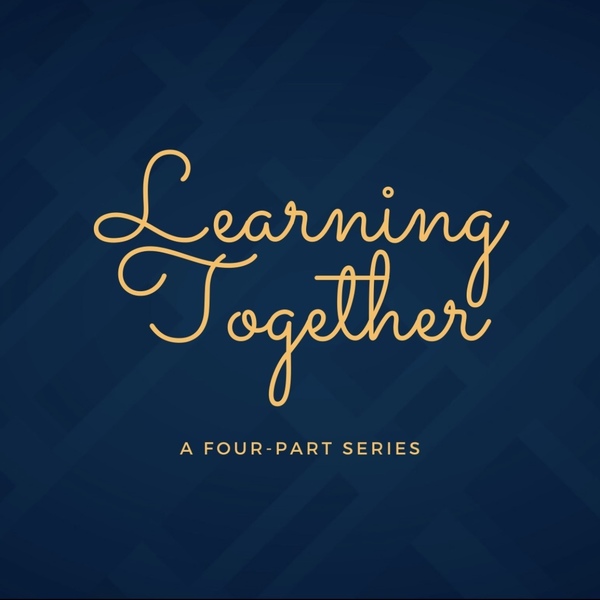
In our final part of the Learning Together series, I would like to say thank you to those who have embarked on this journey with us toward greater challenge and growth in how we address race and racism in our societies. This installment speaks on how racism is present today and how we can begin to dismantle this long-established social fracture. This is now a battle against systemic racism in order to create a world that is just.
My best interpretation of the problem of systematic racism is the, increasingly viral, example of scissors. Scissors are a basic household instrument that even children use in their school lives. That being said, it is very hard to find left-handed scissors (barring Amazon). The majority of the world can walk into any grocery store and pick up scissors, however, a left-handed person will either have to go out of their way to find left-handed scissors OR struggle to use a basic tool that was not designed with them in mind. This can be applied to left-handed desks, American cars as gearshifts are on the right, among other instruments and tools many of us rely on every day.
Similarly, what systems do we as a nation, which has a history of colonization, enslavement, and active prohibition of equality and rights, have in place that do not keep other human beings in mind? What systems inherently make the average Black man work harder than his white counterpart? What institutions give the benefit of the doubt to white women but not Black women? These questions are important and call for internal evaluation.
While no one wants a system that rewards mediocrity, we too, should not be complacent in a system that punishes any demographic, while rewarding another for the same thing. This is a prejudiced institution, and when it concerns prejudice against one due to the color of their skin, it is a racist institution.
- 13th by Ava DuVernay (Netflix film)
This social documentary explores the 13th Amendment, which while disavowing slavery, created an access point to exploit labor from those in prison. This neo-slavery is still present and has led to a prison-to-prison pipeline, rather than methods towards rehabilitation. This fact is compounded with a vastly disproportionate number of incarcerated African Americans compared to all other races, despite making up just 13 percent of the population. Another example of a shocking statistic is that one out of three Black men will face time in prison, due to racism in the justice system, socioeconomic barriers, and historical factors like redlining and Jim Crow laws.
- Confronting Racism by TED Radio Hour (56 min podcast)
In this hour-long discussion, TED Radio Hour discusses the institutions and effects of systemic racism in the United States today. This is important to round off our journey toward understanding the issue at hand in order to better solve it. Without looking at how inequality prospers, we can never truly understand how we help it spread.
- Race, Power, and Policy by Grassroots Project (10 min for basics, 1 hr read for entirety)
This paper goes very much in-depth on the issue of racism in a socio political aspect in America. It looks at our institutions and structures that, either explicitly or implicitly, enforce a racial hierarchy. How do the effects of racism spill over into many of our social norms and customs that we hold near and dear to our hearts? This question is explored throughout the page, but the key elements of the piece are captured in the beginning of the paper.
- This is America by Childish Gambino (4 min video) [caution for language]
This viral music video takes a trip through America’s history of racism, from stereotypes like a Sambo character to the protection of weaponry over humanity. It also depicts major recent events in America, and this artistic interpretation provides a multifaceted look at Gambino's America. There was a wide critical appraisal of this song and video, and it received great support from Black America. The big questions while listening to the lyrics and watching the chaos emerge is, why? Why did this resonate so deeply with Black America?
The following sources are books available for purchase that speak on racism in modern America.
How to be an Antiracist by Ibram X Kendi
Malcolm X - Autobiography by Malcolm X (Alex Healy)
The New Jim Crow by Michelle Alexander
The purpose of this final installment is not to provide a solution but to provide a capstone to our original goal: (1) Identify the issue of racism in America and (2) figure out how it works. Parts one and two of this project identify the issue of racism and explore its roots. Parts three and four focus on understanding how racism has continued into the present and work to identify the mechanism through which it prospered.
Part five is an unwritten portion to be completed by you, the reader. Part five is action. Ask questions and search for answers. Expand your empathy, open-mindedness, and thirst for equality. Do not fear, equality is not a threat to any individual. Instead, it is a threat to supremacy, to hierarchy, to injustice, to inhumanity.
Lastly, let me leave you with this famous verse: "...'Love your neighbor as yourself.’ There is no commandment greater than these.” Mark 12:31